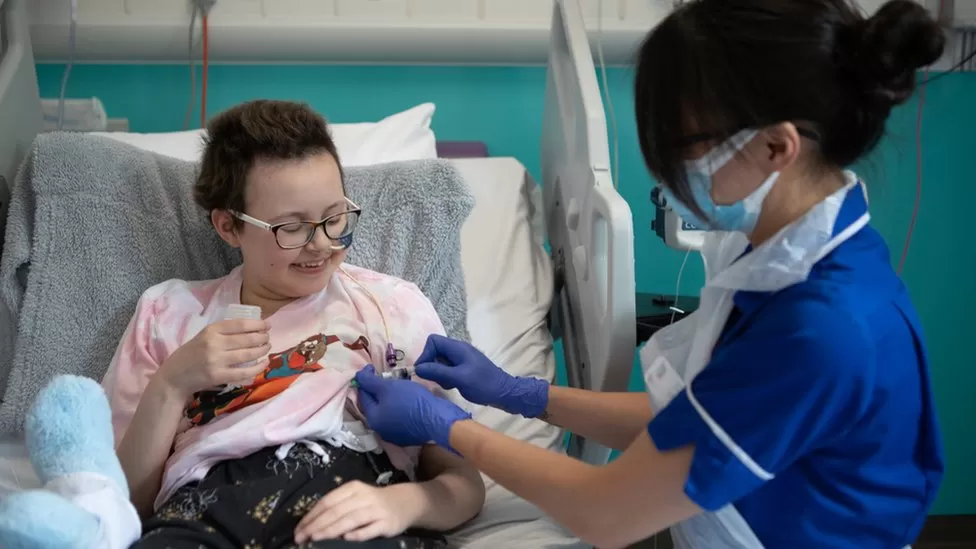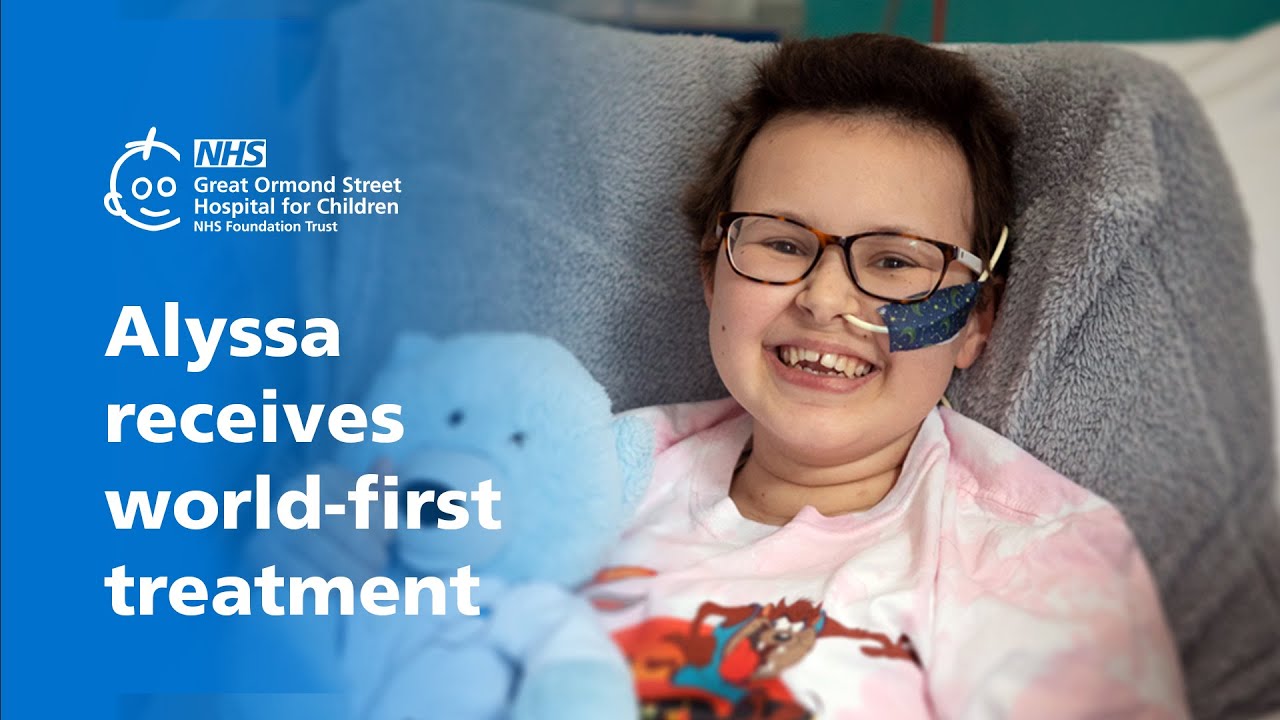Base Editing - Cures Terminal Cancer In Girl
After undergoing groundbreaking treatment, Base Editing, in London, a 13-year-old girl was cured of her terminal cancer. Base editing, the technique utilized by the Great Ormond Street group, was developed in the last several years.
Author:Suleman ShahReviewer:Han JuDec 14, 202298.5K Shares1.3M Views

After undergoing groundbreaking treatment, Base Editing, in London, a 13-year-old girl was cured of her terminal cancer. After a round of chemotherapy and a bone marrow transplant, physicians informed Alyssa's family that they could do nothing more to rescue her from the deadly disease known as T-cell acute lymphoblastic leukemia that she was diagnosed with in May 2021, as reported by BBC.
However, Alyssa opted to try out a novel, experimental therapycalled base editing rather than get palliative care. To help her, physicians at Great Ormond Street Hospital employed "base editing" to create a novel live medication. Even though Alyssa's cancer has been undetected for the last six months, she is still undergoing regular checks in case it returns.
“„Once I do it, people will know what they need to do, one way or another, so doing this will help people – of course I’m going to do it.- Alyssa
At this time last year, Kiona was dreading the holiday season because she was "thinking this is our last with her," according to Kiona. Later in January, her kid turned 13, and she "just wept" during the celebration.

Alyssa's story: Base Editing & CAR T-Cell Therapy at Great Ormond Street Hospital
What Is Base Editing?
Base editing, the technique utilized by the Great Ormond Street group, was developed in the last several years.
To communicate with life, you need to learn the language of bases. Adenine (A), cytosine (C), guanine (G), and thymine (T) are the four kinds of bases found in DNA. The billions of bases in our DNA are like letters in the alphabet; they lay out the instruction handbook for our body.
Scientists may use base editing to zero in on a specific section of the genetic code and then change the chemical structure of a single base to modify the genetic instructions. The huge medical and scientific team utilized this instrument to create a novel T-cell that could seek out and destroy Alyssa's malignant T-cells.
They began by altering donor T-cells, which were originally healthy. To prevent the T-cells from attacking Alyssa's body, the initial round of editing turned off their targeting mechanism. The second one got rid of CD7, a chemical marker found on all T-cells.
The final modification served as an invisibility cloak, protecting the cells from a chemotherapeutic medication. All of her T-cells, including the malignant ones, were wiped out when the last round of genetic alteration directed the T-cells to look for anything with the CD7 marker on it.
That's why the treatment has to have that label taken off of it: else, it'll simply destroy itself. With any luck, Alyssa's second bone marrow transplant will restore her immune system, including her T-cells.
How Was Treatment Conducted?
Upon hearing the plan, Kiona, the mother, was left wondering, "You can do that?" In May of this year, Alyssa volunteered to be the first person to get the experimental treatment, which included millions of the changed cells.
Due to the designer cells' assault on Alyssa's healthy T-cells as well as the malignant ones, she is now susceptible to infection. A second bone marrow transplant was performed after one month, and Alyssa went into remission.
For the duration of Alyssa's 16-week hospital stay, she was quarantined from her still-schooling brother for fear that she might get an infection from him. Concerns arose when a checkup after three months revealed new cancerous growths. However, the results of her two most recent probes were unambiguous.
Although standard therapies are effective for the vast majority of children with leukemia, it is estimated that as many as a dozen children each year might benefit from this approach. Alyssa is the first of 10 participants in a clinical experiment to get the medicine.
“„It is extremely exciting. Obviously, this is a new field in medicine and it's fascinating that we can redirect the immune systemto fight cancer.- Dr Robert Chiesa, Great Ormond Street Hospital
What can be accomplished with base editing is much more than what this technologycan now do. Base editing was created at the Broad Institute, and Dr. David Liu told me it was "a little weird" that patients were being treated just six years after the invention of the technique.
Each of the base modifications in Alyssa's treatment rendered an inoperable chunk of her genetic code. However, there are more subtle uses, such as when correcting a faulty command rather than turning it off entirely. A single correctable base alteration in the DNA causes sickle cell anemia.
Studies using base editing are now being conducted for the treatment of sickle cell illness, hereditary excessive cholesterol, and beta-thalassemia.
“„Therapeutic applications of base editing are just beginning and it was humbling to be part of this era of therapeutic human gene editing, as sciencewas now taking key steps towards taking control of our genomes.- Dr David Liu, Broad Institute
Final Words
Through base editing, researchers may zero in on a specific section of the genetic code and then modify the chemical structure of a single base to change the genetic instructions.
The huge medical and scientific team utilized this instrument to create a novel T-cell that could seek out and destroy Alyssa's malignant T-cells. These T-cells, which normally patrol the body to eliminate any potential dangers, had turned against Alyssa and were multiplying uncontrollably.

Suleman Shah
Author
Suleman Shah is a researcher and freelance writer. As a researcher, he has worked with MNS University of Agriculture, Multan (Pakistan) and Texas A & M University (USA). He regularly writes science articles and blogs for science news website immersse.com and open access publishers OA Publishing London and Scientific Times. He loves to keep himself updated on scientific developments and convert these developments into everyday language to update the readers about the developments in the scientific era. His primary research focus is Plant sciences, and he contributed to this field by publishing his research in scientific journals and presenting his work at many Conferences.
Shah graduated from the University of Agriculture Faisalabad (Pakistan) and started his professional carrier with Jaffer Agro Services and later with the Agriculture Department of the Government of Pakistan. His research interest compelled and attracted him to proceed with his carrier in Plant sciences research. So, he started his Ph.D. in Soil Science at MNS University of Agriculture Multan (Pakistan). Later, he started working as a visiting scholar with Texas A&M University (USA).
Shah’s experience with big Open Excess publishers like Springers, Frontiers, MDPI, etc., testified to his belief in Open Access as a barrier-removing mechanism between researchers and the readers of their research. Shah believes that Open Access is revolutionizing the publication process and benefitting research in all fields.

Han Ju
Reviewer
Hello! I'm Han Ju, the heart behind World Wide Journals. My life is a unique tapestry woven from the threads of news, spirituality, and science, enriched by melodies from my guitar. Raised amidst tales of the ancient and the arcane, I developed a keen eye for the stories that truly matter. Through my work, I seek to bridge the seen with the unseen, marrying the rigor of science with the depth of spirituality.
Each article at World Wide Journals is a piece of this ongoing quest, blending analysis with personal reflection. Whether exploring quantum frontiers or strumming chords under the stars, my aim is to inspire and provoke thought, inviting you into a world where every discovery is a note in the grand symphony of existence.
Welcome aboard this journey of insight and exploration, where curiosity leads and music guides.
Latest Articles
Popular Articles